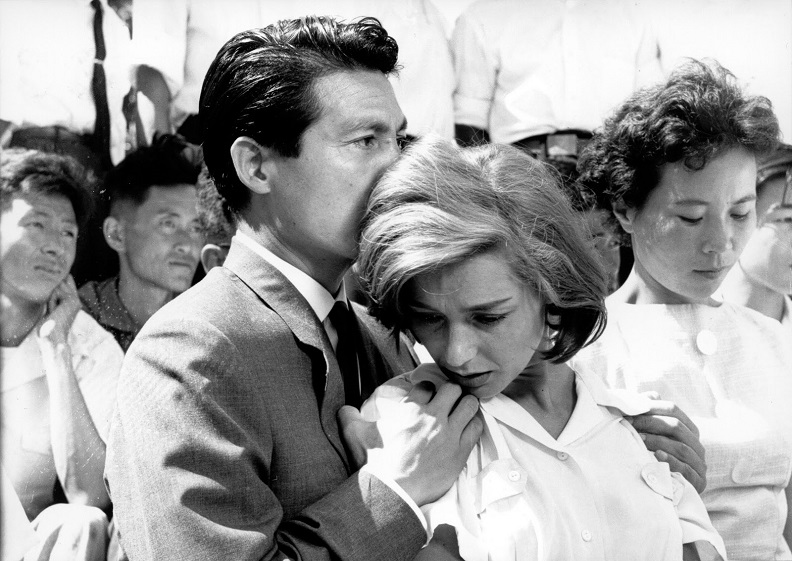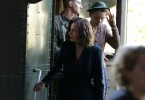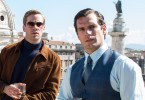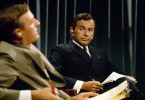Hiroshima Mon Amour
Director: Alain Resnais
Spine #196
(Blu-ray/DVD)
War, love, memory, and loss: the most appropriate terms to describe the pathos of Hiroshima Mon Amour. Through the images and dialogue of the film, a deeply poignant — and real — story is told: the eternal conflict of life’s constants. These are the universal themes confronted by our characters, who carry this weight in striking ways that immerse us in their polarity. By the end of the film, we’re reminded of our own sadness and, likewise, have been cathartically freed of it.
Hiroshima’s unnamed characters emerge in a bed following a session of passionate lovemaking. The woman is a French actress (Emmanuelle Riva) who has been stationed in the city of Hiroshima to shoot a film. The man (Eiji Okada), on the other hand, is a Japanese architect and politician who lost his family years prior at the hand of the atomic bomb. Keen to each other, they begin to talk — or, to be more accurate, they investigate each other. After contemplating their relationship, they quickly realize they have something special. Unfortunately, said something cannot be, as they are both married and the actress is leaving Japan in the morning. Temptation takes hold and for the rest of the film follows them through the city as they attempt to piece each other’s backstory together and ultimately fall in love. Any viewer who is a fan of the intimate strolls found in Richard Linklater’s Before trilogy or the happenstance connection found in Lost in Translation should seek out Hiroshima, a precursor to both films.
The lengthy conversations between protagonists revolve around how we remember and forget. Wanting to visually mirror the depth of these ideas, director Alain Resnais had the brilliant notion to seamlessly intercut flashback sequences when a character’s words conjure the past. Although flashbacks had been around for quite some time at this point, this particular method required no fade-to-black and didn’t disrupt the flow of dialogue. Because of Resnais’ innovative technique in the visual structure of storytelling, he’s remembered as a forerunner of the avant-garde French New Wave movement.
Released in 1959, 14 years after the bombing of Hiroshima, segments of the film are dedicated to resonating the tragedy that occurred. A sequence taking place in a Hiroshima memorial museum uses a poetic narration to describe the surviving relics on display. As the camera rolls, we see pictures of deformed bodies, locks of hair that fell out of victim’s heads, and melted rubble likened to a “bouquet of bottle caps.” It’s a haunting yet beautiful segment that implores us to remember, no matter how ugly, an event that shaped a nation. This scene and others make Hiroshima more than two people passionately falling for one another, but a film interested in preserving a moment in history.
Shot in pristine black-and-white film and complemented by a score that echoes the inner feelings of its characters, even Hiroshima’s more simple facets have a refined quality to them. Still, taking all of its pieces together, it’s hard to imagine any enthusiast walking away from this film’s closing words without experiencing something, be it either the emotional or cultural response the film so expertly invites.





